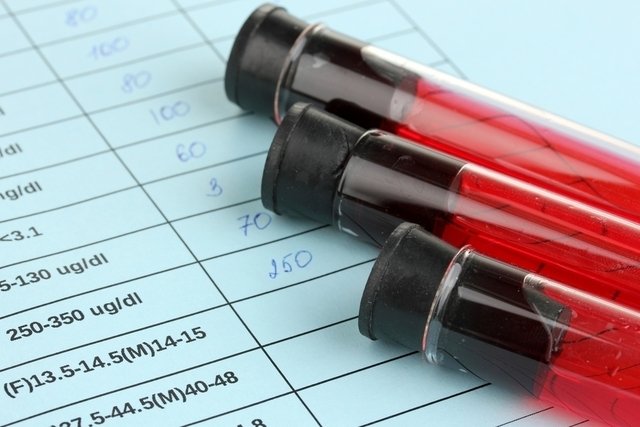Hematocrit is a test that measures the percentage of red blood cells in the blood, also called red blood cells, being considered normal between 40 and 50% in men and 35 to 45% in women.
Normally, the hematocrit is altered in cases of dehydration, bleeding, anemia and lung diseases, such as COPD, and it is also common for there to be changes in the amount of red blood cells or hemoglobin in the blood. See what high and low hemoglobin in the blood means.
In the event of a change in the hematocrit, especially if other symptoms such as weakness and a racing heart appear, it is recommended to consult a hematologist or general practitioner so that the cause can be identified and the most appropriate treatment can be started.

Hematocrit reference values
Hematocrit reference values vary from laboratory to laboratory, but generally the normal hematocrit value is:
- Woman: between 35 and 45%. In the case of pregnant women, the reference value is normally between 34 and 47%;
- Man: between 40 and 50%;
- Children from 1 year old: between 37 and 44%.
Normally, the doctor interprets the hematocrit value taking into account the person’s health history and the results of other tests, such as the blood count, to identify the cause of the changes. Learn how to understand blood count results.
How to know if it’s normal
To find out if your hematocrit is normal, enter your test results into the calculator below:
What can be a low hematocrit?
Low hematocrit can be caused by:
- Anemia;
- Bleeding;
- Malnutrition;
- Infections;
- Lack of vitamin B12, folic acid or iron;
- Leukemia;
- Excess hydration.
Furthermore, low hematocrit is also common in pregnancy and can be a sign of anemia, especially if hemoglobin and ferritin values are also low. Understand what anemia is during pregnancy.
What can be a high hematocrit
High hematocrit can be caused by dehydration, lung diseases, such as COPD, and some heart diseases, especially congenital heart disease, for example, and is more common in people who smoke.
Bibliography
- STATPEARLS. Anemia. 2022. Available at: <https://www.ncbi.nlm.nih.gov/books/NBK499994/>. Accessed on January 9, 2023
- STATPEARLS. Physiology, Maternal Blood. 2022. Available at: <https://www.ncbi.nlm.nih.gov/books/NBK557783/>. Accessed on January 9, 2023
- STATPEARLS. Hematocrit. 2022. Available at: <https://www.ncbi.nlm.nih.gov/books/NBK542276/>. Accessed on January 9, 2023
- HARDER, Louise; BOSHKOV, Lynn. The optimal hematocrit. Crit Care Clin. Vol.26, n.2. 335-354, 2010
- BROADWAY DURINGS, Jacqueline; KLAASSEN, Hillary. Anemias. Crit Care Nurs Clin North Am. Vol.25, n.4. 411-426, 2022




